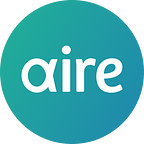This is the first of a two-part series by Tom Oscherwitz, VP of Operations and Counsel, looking at evolving lender approaches to understanding personal income. A link to the second part of the series is here
Understanding consumer income is becoming a big business.
One leading company, which verifies income through consumer payroll data, saw its revenue surge from $764 million to over two billion dollars between 2017 and 2021.
This growing lender appetite for income information has sparked a wave of businesses seeking to meet the demand. Some FinTechs are building data “pipes” to connect lenders directly to employer payroll systems. Financial data aggregators are linking lenders with consumer permission to the direct deposit information in consumer bank accounts. The nationwide credit bureaus, meanwhile, are modeling consumer income from credit repayment data.
All these companies are sensibly targeting consumer wages, because, frankly, jobs are the source of most consumer income.
According to IRS statistical reports on 2019 tax filings (2018 tax year), 67% ($7.9 trillion) of all income reported on Form 1040 consisted of wage and salaries compared to only 12% from capital gains, taxable interest, and dividends. If retirement income and income through business or partnerships are taken out, 83% of all personal income comes from jobs.
The contribution of wages to income is even more striking for 94% of consumers who earn less than $200,000 per year. In 2018, consumers with wages:
- under 50k got 95% of their total income from their work;
- between 50k and 100k got 92% of their income from work; and
- between 100k and 200k got 88% of their income from work.
Given that wages are the primary source of income, it’s surprising how little attention most income providers pay to the jobs consumers are doing. The golden nugget is considered to be the digital equivalent of an employee pay stub. It’s like going to a credit bureau and looking at one month of credit performance, instead of looking holistically at the consumer’s payment history.
While providers of digital paystubs have their place, these approaches also have drawbacks. Many of these solutions can only cover limited populations. Some raise significant privacy concerns, while others create a lot of friction in the consumer experience or are prohibitively expensive. Aire has a different approach to leveraging job data. We look at the features of the job itself — job title, location of work, length of job experience, and part-time or full-time status — to generate our income insights. These analytics enable us to assess the current income for most salaried workers. For example, at one lender, Aire successfully generated occupational characteristics for nearly 70% of consumers, and 50% of estimated annual incomes fell within around $8,000 of the verified values.
What’s even more exciting is that job insights support a more sophisticated view of a consumer’s income. Understanding what people do for a living uncovers not just a point in time calculation of income, but their income story. Because once you understand what people do, you can understand other factors like job-related income risk, stability, and trends for future income. For Aire, it’s all about the job.
